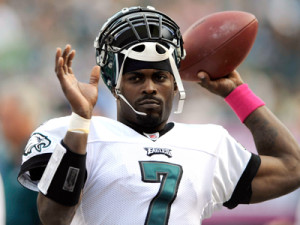 Qualified personnel within each NFL team’s Front Office thoroughly evaluate the entire player roster at the conclusion of each season. And while every team has moves it wants to make to better the team for the subsequent season, only a limited number of options exist prior to the start of the new League Year on March 12. Last week I introduced this process of February roster management, and I detailed the primary reasons why teams may want to remove veterans from the roster. Certain teams are forced to act in February for salary cap reasons, before the new League Year begins.
Qualified personnel within each NFL team’s Front Office thoroughly evaluate the entire player roster at the conclusion of each season. And while every team has moves it wants to make to better the team for the subsequent season, only a limited number of options exist prior to the start of the new League Year on March 12. Last week I introduced this process of February roster management, and I detailed the primary reasons why teams may want to remove veterans from the roster. Certain teams are forced to act in February for salary cap reasons, before the new League Year begins.
A Game in its Own Right
Once a team decides it has to take action on certain players on its roster, what options does it have? How can a team effectively get rid of veterans and their contracts in preparation for a new League Year?
 Option #1
Option #1
The most obvious solution is to outright release players. I listed multiple notable starters last week that have already been released this February prior to the start of the 2013 free agency period. Since then, two more such players have been released, both by the Eagles.
This option is beneficial because it immediately releases a team from any unguaranteed portion of a player’s contract, thereby giving the team that money back in cap space. But releasing a player does not always result in a net gain. For example, assume a team was using the “credit card approach” described last week. If the team decided to cut a player with that type of contract, pro-ration in future years could result in a net loss on the salary cap (not to be confused with the positive credit on cash outlay).
For example, assume Player A signed a four year contract. His salaries are $1 million in year one, $3 million in year two, $5 million in year three, and $8 million in year four. He was given an $8 million signing bonus, which prorates to $2 million counting towards the team’s cap each year of the contract. If the player is no longer wanted after playing through year one of his contract, and the team decides to release (or trade) him, they save the $3 million in salary, but an additional $4 million in pro-ration from years three and four accelerate into year 2! In addition to the $2 million signing bonus pro-ration already counting in year 2, the team has now taken on an additional $1 million net loss on the cap ($3 million – $2 million – $2 million). If released prior to June, this team would have $6 million counting on its’ salary cap for a player not even on the team! In this case, such as the current scenario with Mark Sanchez, releasing the player is not an option.
 Option #2
Option #2
The second option is to reduce a player’s base salary. Like the first option, a team may decide the player is no longer producing at the level of his base salary; however, the team would still like to keep the player on the team, albeit at a lesser amount. The team will then simply contact the player’s agent and state that the team has no intention of paying the player at his prescribed salary for the upcoming season. The team will submit a proposal to directly reduce the salary and any other unguaranteed portion of the current year of the player’s contract, and this instantly gives the team salary cap relief. It takes some finesse for the team to help the player understand he is overpaid, but a good agent will realize if his client is underperforming. Such an agent will survey the market, and he will quickly be able to ascertain if other teams feel the same way as his client’s current team. He will then tell the player if he is better off signing the reduced deal or testing the market. In most cases, the reduced deal is better than the offers the player would receive on the open free agent market. And in most cases, the player knows that if he does not accept a reduced contract, the team will have to release him.
 Option #3
Option #3
Similarly, the third option also involves negotiating a reduced player salary, but in this case, the player receives no less money. Rather, a team will approach a player to renegotiate the structure of his current contract, simply to increase cap space in the current year. In most cases teams convert a large base salary into a signing bonus. Players like this, because they get the converted money instantly, rather than having to wait to earn it over the course of a season.
For example, assume a team has a player scheduled to make $14 million in base salary for the upcoming season, and the player has 3 years left on his contract. If the team reduces his $14 million salary to $2 million, $12 million can then be converted to signing bonus on a “new” 3-year contract. Accordingly, $4 million will now count as proration in each year remaining in the deal. So the player is getting paid the same cumulative total, and the team’s cap charge just went down from $14 million to $6 million ($2 million + $4 million).
Rather easily, the team just created $8 million in cap space! As undeserved as it is, the team executive may even be lauded by the media for working some fantastic ‘cap magic.’ But you now know the difference between genius and forced maneuverings: The more money a team converts to signing bonus, the more pro-ration that is pushed into future year’s salary caps. In this scenario, the team can easily set itself up for future cap problems, so teams should be careful to not convert any more than is necessary.
Time to Extend
Ideally teams like to schedule these renegotiations such that a player is receiving a contract extension while also reducing his current year’s cap charge. While this multi-year extension does help to secure a player in the future and reduce a large cap charge, money initially earmarked for the current League Year is still being pushed into the future. With enough of these deals on a roster, the team will no doubt be paying dearly for prorated money in the future! At any rate, you will see numerous extensions in February with the intent of generating a cap savings (which may or may not be reported). I negotiated many such deals during my time working on the team side.
 Option #4
Option #4
Lastly, a team can look to trade, but the trade can only be officially consummated after the new League Year begins. If a team wants to get rid of a player and the team feels that the player has a high enough value to other teams, it will choose to hold on to a player into the new League Year. If the team is not desperate in February for the immediate cap space gained by outright releasing the player, holding onto the player until late March can be beneficial.
Teams usually begin shopping players quietly at the end of February while at the Scouting Combine. While no deals are official, terms can be agreed to. A team may be putting the player on the trading block because the player will not take a reduced salary and/or the team knows the player is of high value/interest to numerous other teams. Without outright stating it, executives will try to subtly generate rumors about their team wanting to get rid of a player. (When other teams know that the player’s current team is looking to get rid of him, the acquiring teams have the leverage. And with that leverage comes a lowered offering price.) So a team can maintain leverage by floating rumors and gauging the market for a player by the number of inquiries they get in February. If very few calls occur with little to no compensation, it makes sense to simply release the player.
With trading a player, not only would the team gain the cap space, but it would also receive compensation in return. In most of these cases, a team will receive a mid-round draft pick. Interested parties know the team doesn’t plan to hold onto the player, but they also know the team will not be releasing him. The player will likely be traded to the highest bidder. As a result, the decision to hold onto the player into the new League Year reaps the extra reward of a draft pick.
However, if a team holds on to a player and his salary cap charge, especially if the cap space is needed to sign new players, they had better be sure they will get worthwhile compensation in a trade. Otherwise, they kept the player on the roster for no reason and were not able to use the cap space they would have generated by releasing him in February. This approach requires patience.
On rare occasions a team will have a committed suitor in place prior to the trade period opening, but most of the time the team will have to wait for the free agent market to dry up at that position. Once only marginal free agents are left (usually the fourth week of free agency), the player being shopped in a trade will gain value. Think of musical chairs: Assume 5 teams need veteran quarterbacks that have proven their worth as starters. If only 3 such quarterbacks exist in free agency, 2 teams will be left without a chair. Consequently, one or more teams will turn to the team that is shopping a quarterback. So the decision to not release the player in February pays off for the trading team, if the team has enough cap space!
The End of the Beginning
No matter what a team decides to do, the actions teams take in February are done with a purpose. So the next time you hear of a player extension, renegotiation or release in February or early March, you will have the knowledge to diagnose the actual reason for the move.
With the NFL Combine concluding, free agency is the next step. Next Friday I plan to dissect and explain the details involved with that frenzy of action. If you have any feedback, you can contact me directly.



Wow that was strange. I just wrote an very long comment but after I clicked submit my
comment didn’t appear. Grrrr… well I’m not writing all that over
again. Anyway, just wanted to say wonderful blog!